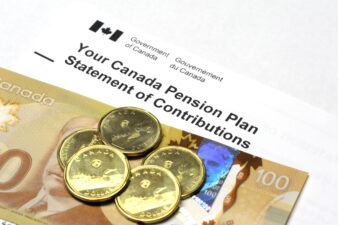Retirement experts in Canada wouldn’t advise soon-to-be retirees to rely only on the Canada Pension Plan (CPP) and Old Age Security (OAS) pensions in retirement. Both are partial replacements to the average pre-retirement income. However, it’s not totally impossible to subsist with only the country’s retirement foundation in the golden years.
Income expectations
An individual pensioner could expect to receive an average monthly CPP of $689.17 (October 2020) and a maximum OAS benefit of $615.37 (for 2021) per month at age 65. Thus, the annual guaranteed lifetime income is $15,654.58. For retiring couples receiving both pensions, the yearly household income translates to $31,308.96.
The above assumes you will not start your CPP payment earlier than 65 or receive a reduced pension. Also, the OAS is available at 65, not earlier. If the retirement lifestyle is moderate, not luxurious, the annual income should be adequate to cover all the financial needs in retirement.
Delay the CPP and OAS
Delaying the CPP and OAS until 70 is an option for prospective retirees because the monthly pensions will increase by 42% and 36% permanently. Assuming the partners are in excellent health, the delay option would bump up the annual household income to $43,572.89.
Individually, the yearly pension at 70 amounts to $21,786.30 instead of $15,654.58 if you were to start at age 65. Furthermore, several government programs (federal, provincial, and local) like the Guaranteed Income Supplement (GIS) are available to low-income seniors. A senior with an annual income of less than $18,648 could receive $919.12 per month in GIS.
Downsize
Canadians nearing retirement usually downsize to limit expenses and not overshoot the budget. Moving to a smaller residence in less expensive cities or the suburbs can free up more cash, reduce maintenance and other related costs. The decision is practical if the objective is to make do with the CPP and OAS pensions.
Better financial shape
Saving and investing in income-producing assets will boost retirement income and give you the confidence to retire. Many retirees desire a worry-free retirement, so they put in time and effort to build an income fund separate from the CPP and OAS.
Among the established dividend stocks is no less than the largest financial institution in Canada. The Royal Bank of Canada (TSX:RY)(NYSE:RY) is a reliable income provider. This $151.13 billion bank has been paying dividends since 1870, and the 150-year-old practice isn’t stopping anytime soon despite the massive industry headwinds.
The blue-chip stock trades at $106.20 per share and pays a decent 4.07% dividend. If you have a 20-year investment horizon and invest $125,000 today, your capital will compound to $277,601.05. You can then generate $11,298.36 in annual income, assuming Royal Bank of Canada’s yield remains constant. Nothing can give you comfort and financial stability in retirement than an established dividend payer.
Evaluate your circumstance
Having a third income source or pillar apart from the CPP and OAS will put you in a better financial shape in retirement. It would be best to evaluate your circumstance before taking the retirement exit. However, the situation not all dire if you make the right moves and time your decision to claim the CPP and OAS benefits.







